
My reason for going to Israel was for my daughter's wedding. Heather had been in school in Israel for the past year and was working for an American company with offices in Jerusalem. Heather met Rob Tzall, an American student studying at a nearby Yeshiva (school), and after a short "courtship" they selected Nov. 4 for their wedding date.

Since my travel groups for the year are usually planned 12 to 18 months in advance, I had to "sandwich" Israel in between France and Cuba. The trip was fabulous in every respect and the wedding was definitely the high point.
Even though I am Jewish, and have been to many Jewish weddings, this was my first Orthodox Jewish wedding. It was literally the most enjoyable wedding I have ever attended. The rabbis, with their beards, black coats and wide-brimmed hats may look stern and serious, but a wedding is a joyous occasion and they definitely know how to have a good time - and do they love to dance.

Because neither Rob nor Heather comes from an Orthodox background, they were aware we all needed some guidance and set up a class for both families the morning of the wedding. Daniel, a teacher at the local yeshiva, presided over the class and explained the events that would take place before and during the wedding ceremony. A traditional Jewish wedding is full of meaningful rituals, symbolizing the beauty of the relationship of husband and wife, as well as their obligations to each other and to the Jewish people.
The wedding day is considered the happiest and holiest day in the lives of the bride and groom. As on Yom Kippur, the holiest day of the Jewish calendar, the bride and groom fast from dawn until the completion of the marriage ceremony.
Jewish tradition likens the couple to a queen and king. The bride is seated on a "throne" to receive her guests while the groom, in a separate room, is surrounded by guests who sing and toast him. Up to this time the bride and groom still have not seen one another. In fact, it is also a tradition for the bride and groom not to see each other for the entire week leading up to the wedding, thereby increasing the anticipation and excitement of the event.


As the ceremony is about to begin, the groom, accompanied by family and friends, enters the room, walks over to his seated bride, and places a veil over her face. The veil symbolizes the idea of modesty and conveys the message that however attractive physical appearances may be, the soul and character of the bride are paramount. It was explained to us in the class that this is an ancient custom and signals the groom's commitment to clothe and protect his wife.
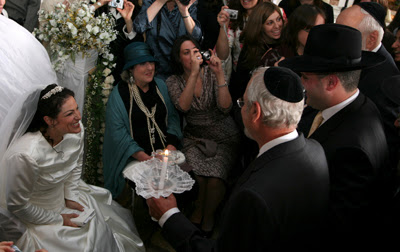
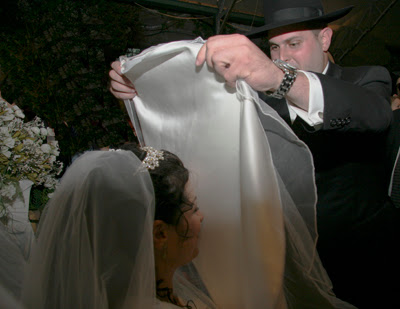
Next, with Rob's mother on one side of Heather, and I on the other, we joined the procession up to the chuppah (canopy), a symbol of the home to be built and shared by the couple.

Once we were all under the chuppah, Heather and I circled Rob seven times. Just as the world was built in seven days, the bride figuratively builds the walls of the couple's new world together. The number seven also symbolizes the wholeness and completeness that they cannot attain separately.
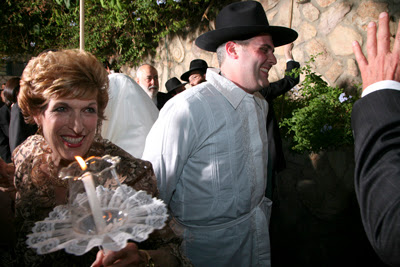
In Jewish law, a marriage becomes official when the groom gives an object of value to the bride. This is traditionally done with a ring. The ring is made of plain gold, "without blemishes or ornamentation." The groom takes the ring in his hand, and in clear view of two witnesses, declares to his wife, "Behold, you are betrothed unto to me with this ring, according to the law of Moses and Israel." According to Jewish law the couple is now considered married, but the ceremony is not over.
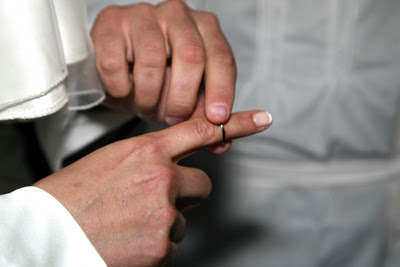
Next comes the reading of the ketubah, the marriage contract written in the original Aramaic text. In a Jewish marriage, the groom accepts upon himself various responsibilities, all of which are detailed in the ketubah. His principle obligations are to provide food, shelter and clothing for his wife, and to be attentive to her emotional needs (good luck, Rob!)

The protection of the rights of a Jewish wife is so important that the marriage may not be solemnized until the contract has been completed. The document is signed by two witnesses, and has the standing of a legally binding agreement. The ketubah is the property of the wife and she has access to it throughout their marriage.
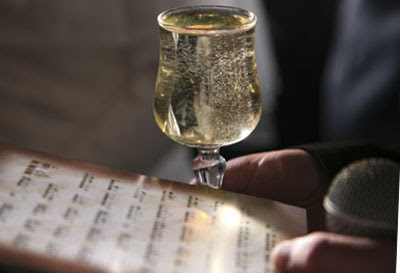
Once the ketubah is signed, the rabbi recites seven blessings. Then a glass is placed on the floor, and the groom shatters it with his foot. This is a common tradition for most Jewish weddings, whether Reform, Conservative or Orthodox, and is an expression of sadness at the destruction of the temple in Jerusalem. According to the rabbi, this act identifies the couple with the spiritual and national destiny of the Jewish people. The breaking of the glass concludes the ceremony and everyone shouts "Mazel Tov!" - good fortune.
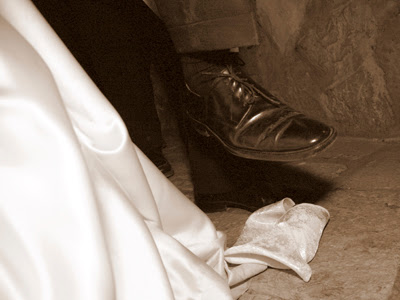
Then the party begins. I realize that most people may think it strange that at an Orthodox wedding men and women celebrate in separate rooms and do not dance together. It may be unusual to us, but it certainly doesn't curtail the festivities. There was a band and everyone danced and danced and danced for hours.
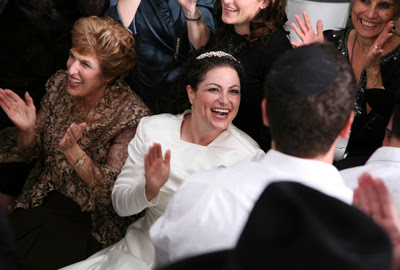
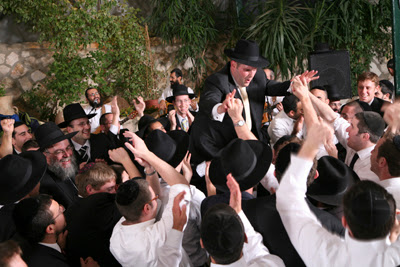
Periodically someone would come over and take Heather (and the family) over to the groom's side for a special performance - acrobatics, juggling, dancing - it was just like in "Fiddler on the Roof." On the women's side there were also special skits and dancing. As a salute to their circus background, Heather and Erin even juggled.
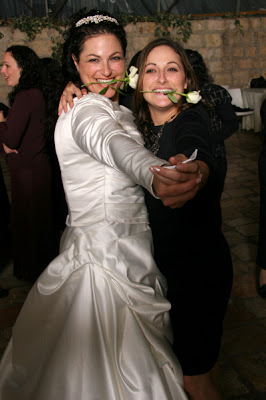
It was truly a wonderful wedding and was definitely the highlight of our trip to Israel. We all have wonderful memories and, with or without a wedding to attend, I highly recommend you consider a trip to Israel in the near future.
Visit Redlands Travel Service for assistance with all your travel needs.




5 comments:
This was very interesting to read as I, too, was not familiar with all the traditions of an Orthodox Jewish wedding. Thanks for sharing this, it sounds like it was a beautiful day!
Thanks for your comment! The traditions and ceremony brought such a sense of history and meaning to the day. It was special. And guess what. Baby Sarah was born a few days ago...October 2008.
Congratulations to the happy couple
and welcome to the world Sarah!
I knew nothing about Orthodox
Jewish weddings,Googled it and
hit upon your page. Thanks for the
great description and pictures.
In preparation for my own huppah, I found your page with all the wonderful pictures and notes! Thanks so much for sharing such beautiful family memories! And mazel tov on the birth of Sarah!
Stacy, thanks so much for your kind comments. It was indeed a joyous and meaningful wedding. I hope yours is as beautiful!
Post a Comment